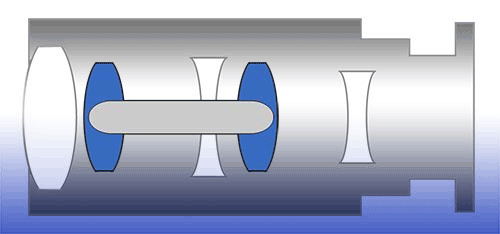Comparing Traditional & Optically Corrected Zoom Lenses
 A zoom lens is a versatile optical component, used in cameras, sensors and instruments, that offers the user a useful range of different focal lengths in a single lens. This is in comparison to a fixed focus lens, which only offers a single focal length. A zoom lens typically allows for quick and easy re-framing of a scene while staying in the same physical position.
A zoom lens is a versatile optical component, used in cameras, sensors and instruments, that offers the user a useful range of different focal lengths in a single lens. This is in comparison to a fixed focus lens, which only offers a single focal length. A zoom lens typically allows for quick and easy re-framing of a scene while staying in the same physical position.
But do all types of zoom lens offer the same advantages and disadvantages?
First of all – let’s look at how a traditional zoom lens works. A traditional zoom lens relies on a complex cam mechanism to control the individual movement of the different optical cells within the lens to maintain focus throughout the zoom range. This method requires very accurately machined components to ensure a consistent movement that does not make the image jump and move around. To ensure smooth zoom movement these moving parts are required to be greased and this can be a problem in harsh environments or in space applications.
By comparison, optically corrected zoom lenses, also known as optically compensated zoom lenses) are simpler in design relying on two optical cells moving together each side of a fixed cell. Advantageously this movement is linear so there is no need for complex cam mechanisms. The movement in an optically corrected zoom lens is effectively a push-pull movement. The benefits of an optically corrected zoom lens design include simplified construction, they are more rugged than traditional zoom lenses and no greases are required for smooth zoom operation making them ideal for space applications or harsh environments. However, optically corrected zoom lenses do have limitations – they are not suited for applications requiring a large field-of view or where a zoom range greater than x4 is required.
